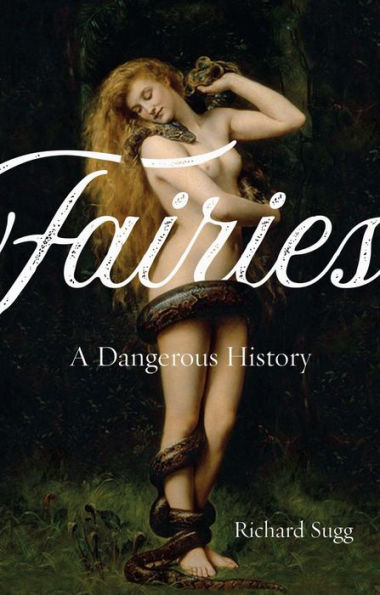Fairies: A Dangerous History
Don’t be fooled by Tinkerbell and her pixie dust—the real fairies were dangerous. In the late seventeenth century, they could still scare people to death. Little wonder, as they were thought to be descended from the Fallen Angels and to have the power to destroy the world itself. Despite their modern image as gauzy playmates, fairies caused ordinary people to flee their homes out of fear, to revere fairy trees and paths, and to abuse or even kill infants or adults held to be fairy changelings. Such beliefs, along with some remarkably detailed sightings, lingered on in places well into the twentieth century. Often associated with witchcraft and black magic, fairies were also closely involved with reports of ghosts and poltergeists. In literature and art, the fairies still retained this edge of danger. From the wild magic of A Midsummer Night’s Dream, through the dark glamour of Keats, Christina Rosetti’s improbably erotic poem “Goblin Market,” or the paintings inspired by opium dreams, the amoral otherness of the fairies ran side-by-side with the newly delicate or feminized creations of the Victorian world. In the past thirty years, the enduring link between fairies and nature has been robustly exploited by eco-warriors and conservationists, from Ireland to Iceland. As changeable as changelings themselves, fairies have transformed over time like no other supernatural beings. And in this book, Richard Sugg tells the story of how the fairies went from terror to Tink.
1127202984
Fairies: A Dangerous History
Don’t be fooled by Tinkerbell and her pixie dust—the real fairies were dangerous. In the late seventeenth century, they could still scare people to death. Little wonder, as they were thought to be descended from the Fallen Angels and to have the power to destroy the world itself. Despite their modern image as gauzy playmates, fairies caused ordinary people to flee their homes out of fear, to revere fairy trees and paths, and to abuse or even kill infants or adults held to be fairy changelings. Such beliefs, along with some remarkably detailed sightings, lingered on in places well into the twentieth century. Often associated with witchcraft and black magic, fairies were also closely involved with reports of ghosts and poltergeists. In literature and art, the fairies still retained this edge of danger. From the wild magic of A Midsummer Night’s Dream, through the dark glamour of Keats, Christina Rosetti’s improbably erotic poem “Goblin Market,” or the paintings inspired by opium dreams, the amoral otherness of the fairies ran side-by-side with the newly delicate or feminized creations of the Victorian world. In the past thirty years, the enduring link between fairies and nature has been robustly exploited by eco-warriors and conservationists, from Ireland to Iceland. As changeable as changelings themselves, fairies have transformed over time like no other supernatural beings. And in this book, Richard Sugg tells the story of how the fairies went from terror to Tink.
22.5
In Stock
5
1

Fairies: A Dangerous History
280
Fairies: A Dangerous History
280Paperback(Reprint)
$22.50
22.5
In Stock

Product Details
| ISBN-13: | 9781789141207 |
|---|---|
| Publisher: | Reaktion Books, Limited |
| Publication date: | 10/16/2019 |
| Edition description: | Reprint |
| Pages: | 280 |
| Product dimensions: | 5.40(w) x 8.40(h) x 0.90(d) |
About the Author
From the B&N Reads Blog
